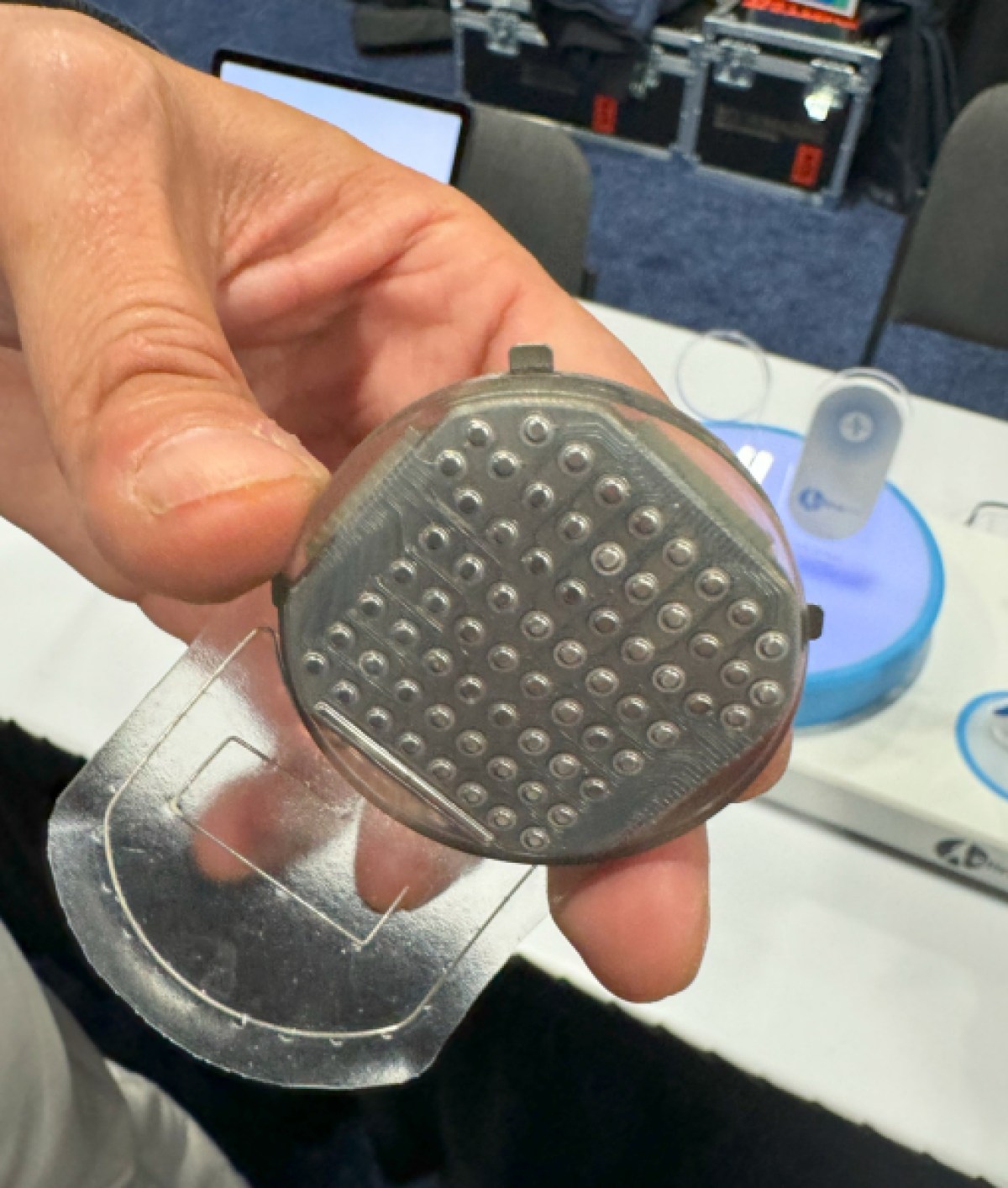Clinatec shows brain-computer neural interface
When it comes to a brain-computer interface, Elon Musk’s Neuralink isn’t the only show in town.
Clinatec also showed off its research at CES Unveiled during CES 2024. The research organization brings together multidisciplinary experts to treat neurological diseases and restore motor functions for those who have had brain or spinal accidents.
Clinatec is a biomedical research center at Polygone Scientifique in Grenoble, France, with biologists, nanontechnology experts and more. Clinatec was developed by the research division of France’s CEA, Inserm and Universite Grenbole Alpes.
The biomedical research center in Grenoble, France, has developed a non-invasive brain implant that rests on the surface of the brain and helps restore electrical communication in areas of the brain that have been damaged, said Abdelmadjid Hihi, deputy director for scientific affairs and partnerships at Clinatec, in an interview with me.

The cerebal implant records neurological activity and it mimics the signals for making muscles work, said Hihi, who has a doctorate in biological sciences from Lausanne University.
“We’ve been working on brain implant technology,” said Hihi. “The concept is that it is possible to use brain activity that corresponds to movement intent to help people who have severe movement impairments.”

For instance, someone with a spinal cord injury may not be able to move. Clinatec tries to record brain activity with a system that is bio-compatible and has electrodes which can send signals out of the brain. Those signals are then decoded in real time by machine learning algorithm based software, Hihi said.
“And then this information was decoded is recorded into machines that can help people walk again or grasp again, or hear again,” he said. “We basically use this system initially with people who had accidents.”
He showed a video of an injured man taking steps with the help of an exoskeleton, and the man is able to do this with signals stimulating both the brain and the muscles. Clinatec has also worked with people who are paraplegics, giving them stimulation for the muscles to make them function.

The work has been going on for more than 10 years, and the first patient got an implant more than six years ago. France supports the research through a grant, and in the future Hihi said the group wants to work with those who have had strokes and need rehab.
The brain accepts the implant because it consists of bio-compatible materials that are tested before implantation. It doesn’t go inside the brain tissue, but sits on top of it so it reduces inflammation and fibrosis. It makes me think of William Gibson’s sci-fi short story Johnny Mnemonic.
GamesBeat’s creed when covering the game industry is “where passion meets business.” What does this mean? We want to tell you how the news matters to you — not just as a decision-maker at a game studio, but also as a fan of games. Whether you read our articles, listen to our podcasts, or watch our videos, GamesBeat will help you learn about the industry and enjoy engaging with it. Discover our Briefings.



